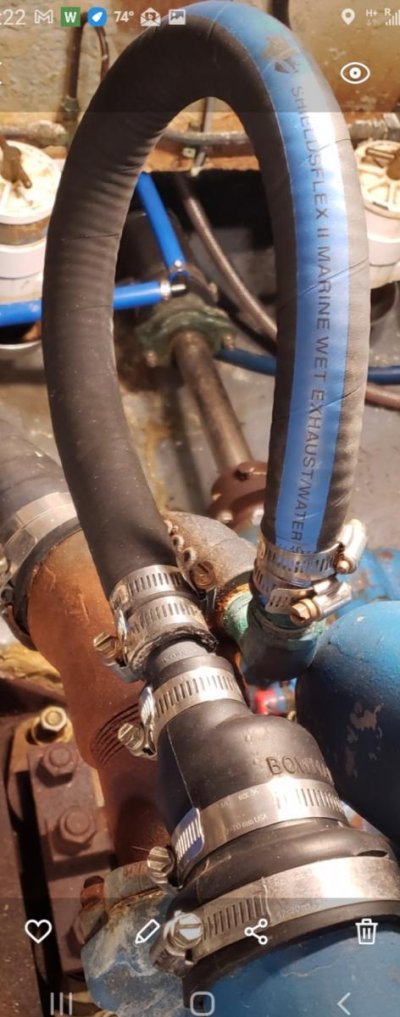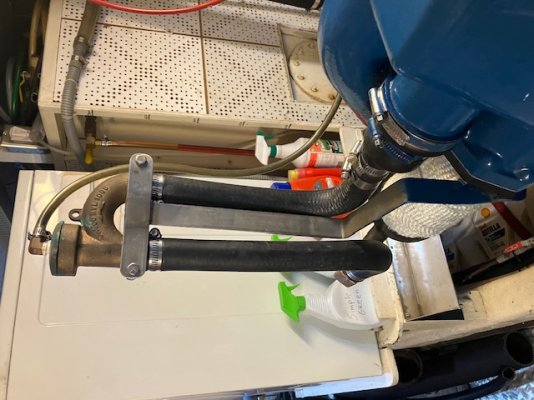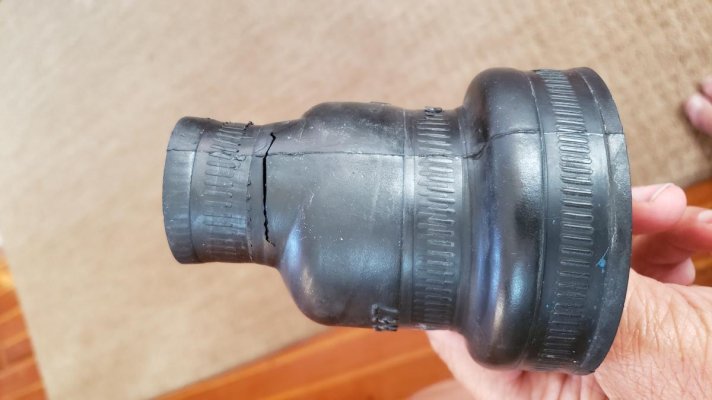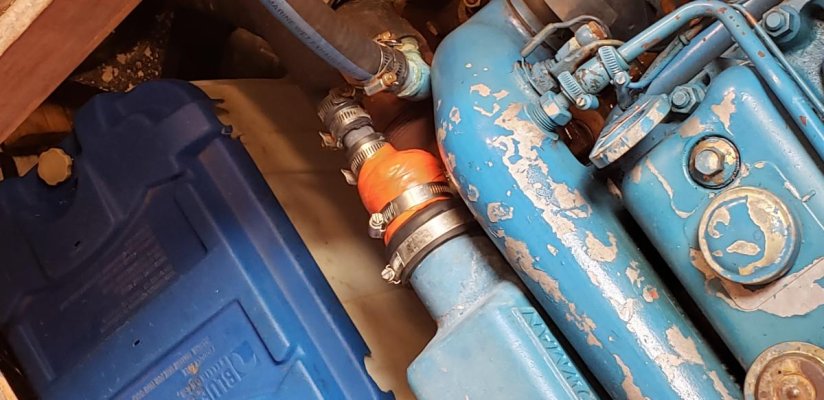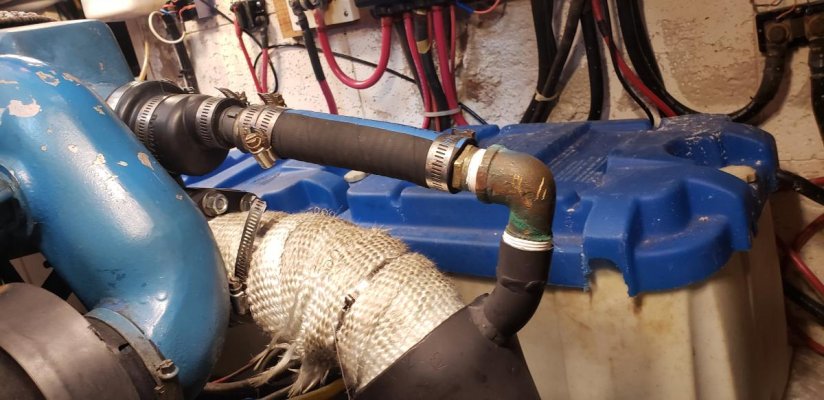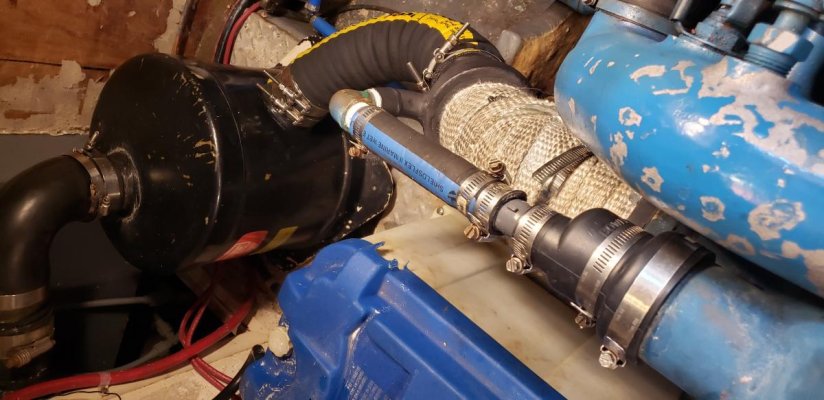Mlm2
Member
I Think the current configuration of this connection add some stress to the boot due to the vibration of the hose. The boot has failed twice within 300 hours of operation. The way it is now makes it easy to service the tube stack, but when it ruptures it makes a mess in my engine room. Looking for recommendations or photos of your setup.
The engine is a Perkins 6.354 with a manicooler.
The engine is a Perkins 6.354 with a manicooler.

